EMC Black features the world's first mechanical movement with electronic monitoring system
Entirely conceived, developed and created by URWERK, EMC – for Electro Mechanical Control – is the world's first 100% mechanical, high precision watch enabling its owner to monitor the movement's timing rate. And there's more: EMC also enables simple adjustment of the timing to suit the daily rhythm and lifestyle of its owner.
In addition to EMC's conventional indications – hours, minutes, seconds and power reserve indicator – is added a completely original performance indicator display, delta/δ, which is activated on demand by a push of a button. This patented, ultra-high precision, performance indicator, is a world first. And the wearer can then easily adjust the movement's precision (rate) by simply turning a screw on the back. EMC offers the horological Holy Grail: ultimate precision for each individual owner.
EMC's gloriously deconstructed ‘instrument panel’ dial consists of discrete, circular and crescent-shaped subdials contrasting superbly against the sleek, black DLC-treated titanium and steel case.
Click on the mouse wheel to see the large size ... BIG FOTO
The indication in the top left corner is the real giveaway that EMC is unlike anything seen before in haute horlogerie: It is a patented, precision performance indicator measuring instantaneous rate (delta or δ) that displays if the movement is running fast or slow.
Feeding the precision indicator are highly innovative, bespoke electronics. Electronics in a mechanical watch? That’s right. After all, EMC stands for Electro Mechanical Control. While EMC’s movement is 100% mechanical – designed, developed and crafted by URWERK and rigorously tested so that it meets the highest standards for a precision watch – URWERK have integrated into the movement a timing rate monitoring unit powered by a manual winding generator and super capacitor.
Click on the mouse wheel to see the large size ... BIG FOTO
The monitoring unit comprises an optical sensor that captures the timing rate of a specially designed balance wheel; a micro-computer then compares that rate against an ultra-fast (16,000,000 Hz) reference oscillator to calculate the isochronism of the movement i.e. how regular its timing is. Each microsecond difference is expressed as a gain or loss of a second per day of the timing rate, displayed on the precision indicator by pressing a caseband button. Fine-tuning of the rate can then be made using the adjustment screw on the caseback, which changes the active length of the balance spring.
Click on the mouse wheel to see the large size ... BIG FOTO
Click on the mouse wheel to see the large size ... BIG FOTO
The monitoring unit comprises an optical sensor that captures the timing rate of a specially designed balance wheel; a micro-computer then compares that rate against an ultra-fast (16,000,000 Hz) reference oscillator to calculate the isochronism of the movement i.e. how regular its timing is. Each microsecond difference is expressed as a gain or loss of a second per day of the timing rate, displayed on the precision indicator by pressing a caseband button. Fine-tuning of the rate can then be made using the adjustment screw on the caseback, which changes the active length of the balance spring.
Click on the mouse wheel to see the large size ... BIG FOTO
“EMC is an ode to the mechanical watch and craft of the watchmaker,” explains Felix Baumgartner, master watchmaker and co-founder of URWERK. “The mechanical watch is a sensitive organism and the timing rate of its movement can fluctuate due to several factors. These changes of pace and performance can easily be detected by a watchmaker, a professional who is armed with the equipment necessary for testing the accuracy of the movement.
“However, it is rare for an amateur to have these tools. But with the EMC, an amateur can have them and is able to dive into the heart of their watch, to see it live and evolve. And we even give the owner a chance to interact with it by allowing them to adjust its timing rate to better suit their daily rhythm and pace of life.”
“However, it is rare for an amateur to have these tools. But with the EMC, an amateur can have them and is able to dive into the heart of their watch, to see it live and evolve. And we even give the owner a chance to interact with it by allowing them to adjust its timing rate to better suit their daily rhythm and pace of life.”
Click on the mouse wheel to see the large size ... BIG FOTO
EMC in detail
At its heart, EMC offers triple functionality:
- showing how external parameters (positional changes, temperature and pressure) influence the timing of the movement
- enabling the wearer to correct these timing variations by adjusting the rate for the best chronometric performance possible
- facilitating interactivity between the timepiece and its owner – the wearer of the watch also becomes its regulator
“However, that is simply not practical. After all, a watch’s raison d’être is being on its owner’s wrist, about how its wearer interacts with it. So we looked at the problem counter-intuitively and gave the wearer – the very person responsible for disrupting its movement’s timing rate – the key to correcting it. It is man’s hand that perfects the mechanics and opens the doors to an infinite power of adaptation.”
Click on the mouse wheel to see the large size ... BIG FOTO
EMC features a deconstructed dial with four separate indications: A clockwise tour of the displays, from top left, presents the: on demand, precision indicator (instantaneous rate delta "δ") ranging from -20 to + 20 seconds per day; seconds dial with counter-balanced seconds hand; hours and minutes; and 80-hour power reserve indicator. Turning EMC over reveals the fully in-house movement with the integrated circuit board – the EMC 'brain' – the top of one of the two mainspring barrels near the crown and the top of the balance wheel and optical sensor on the winding handle side.
EMC is inherently a precision mechanical watch with an in-house movement conceived, developed and crafted in the URWERK ateliers in Zurich and calibrated by URWERK in Geneva. The movement meets the most stringent quality control, with its chronometric performance tested in five positions during a 30-day cycle to ensure that it meets the highest standards for a precision watch.
Click on the mouse wheel to see the large size ... BIG FOTO
EMC’s movement is equipped with the following features:
- - A bespoke balance wheel made of ARCAP, an alloy long admired by URWERK for its non-magnetic and anti-corrosion properties. From the very first glance, the originality of this specially-developed balance is striking. Its perfectly linear morphology is the result of careful calculations to optimize data from the optical sensor, maximize aerodynamic efficiency and minimize loss of amplitude.
- - Power is provided by two large mainspring barrels in series, mounted vertically on a single shaft. These provide a long 80-hour power reserve, which is conducive to stable linear timing performance.
- - The timing adjustment screw is accessible on the back of the watch and allows the owner to make very fine adjustments to the balance rate regulator by changing the active length of the balance spring by turning a simple screw.
Click on the mouse wheel to see the large size ... BIG FOTO
The innovative EMC timing rate monitoring unit has been developed to include the following:
- - An optical sensor on the balance wheel capturing the precise rate of oscillation of the 4 hertz / 28,800 vph regulator, over a period of 3 seconds. This sensor consists of a transmitter and a receiver positioned either side of the balance, and is triggered manually by pressing a button on the left side of the case.
- - A 16,000,000-hertz electronic oscillator. This provides EMC’s reference timing rate. The performance of the balance of EMC (4hz) is compared against this lightning-fast oscillator to obtain the most accurate measurement possible.
- - Artificial intelligence – integrated circuit
- This computer determines the difference between the timing rate of the movement and that of the reference oscillator. Each microsecond difference between the two values is expressed as a gain or loss of a second per day of the timing rate. A variation of just 0.0000014 of a second per half-vibration translates as a variation of a second per day.
- - Manual-winding generator (the generator): EMC’s monitoring unit (the optical sensor and the computer) is powered by a micro-generator made by the Swiss company Maxon, which is well known for developing motors for NASA’s Mars rovers.
"I am passionate about perfecting watchmaking mechanics. The electronics integrated into EMC allow for this perfection,” concludes Felix Baumgartner. “We have created a timepiece in which the subtleties of its mechanical precision are not just laid bare, but can be nuanced and perfected by the beholder.
“The information supplied by the electronics, coupled with ease of fine tuning, allows complete chronometric personalization of the timing. The integrated monitoring and EMC's high precision make me proud to be responsible for its development.”
---------------------------------------------------
Technical Specifications
Case
Material Black DLC treated titanium and steel
Dimensions 43mm width, 51mm length, 15.8mm height
Crystal Sapphire crystal
Water resistance Pressure tested to 30m / 3ATM
Finishing Shot-blasting
Movement
Calibre UR-EMC calibre conceived, developed and manufactured by URWERK
Escapement Swiss lever escapement
Balance wheel ARCAP P40, linear balance coupled to the optical sensor
Frequency 28,800 vph – 4Hz
Balance spring Flat
Energy source Vertically mounted double mainspring barrels, connected in series
Power reserve 80 hours
Winding Manual winding
Finishing: Côtes de Genève, snailing, micro-bead blasting, polished bevels on screw
Artificial intelligence
Generator: Maxon® generator with manual winding charging super capacitor
EMC system: Optical sensor controlled by an integrated circuit board;
16'000'000 Hz reference oscillator
Indications/functions
Hours, minutes, seconds; precision delta, power reserve.
Timing adjustment screw
---------------------------
Press Release PDF
-------------------------------------------
www.facebook.com - URWERK
-------------------------------------------------
www.Urwerk.com


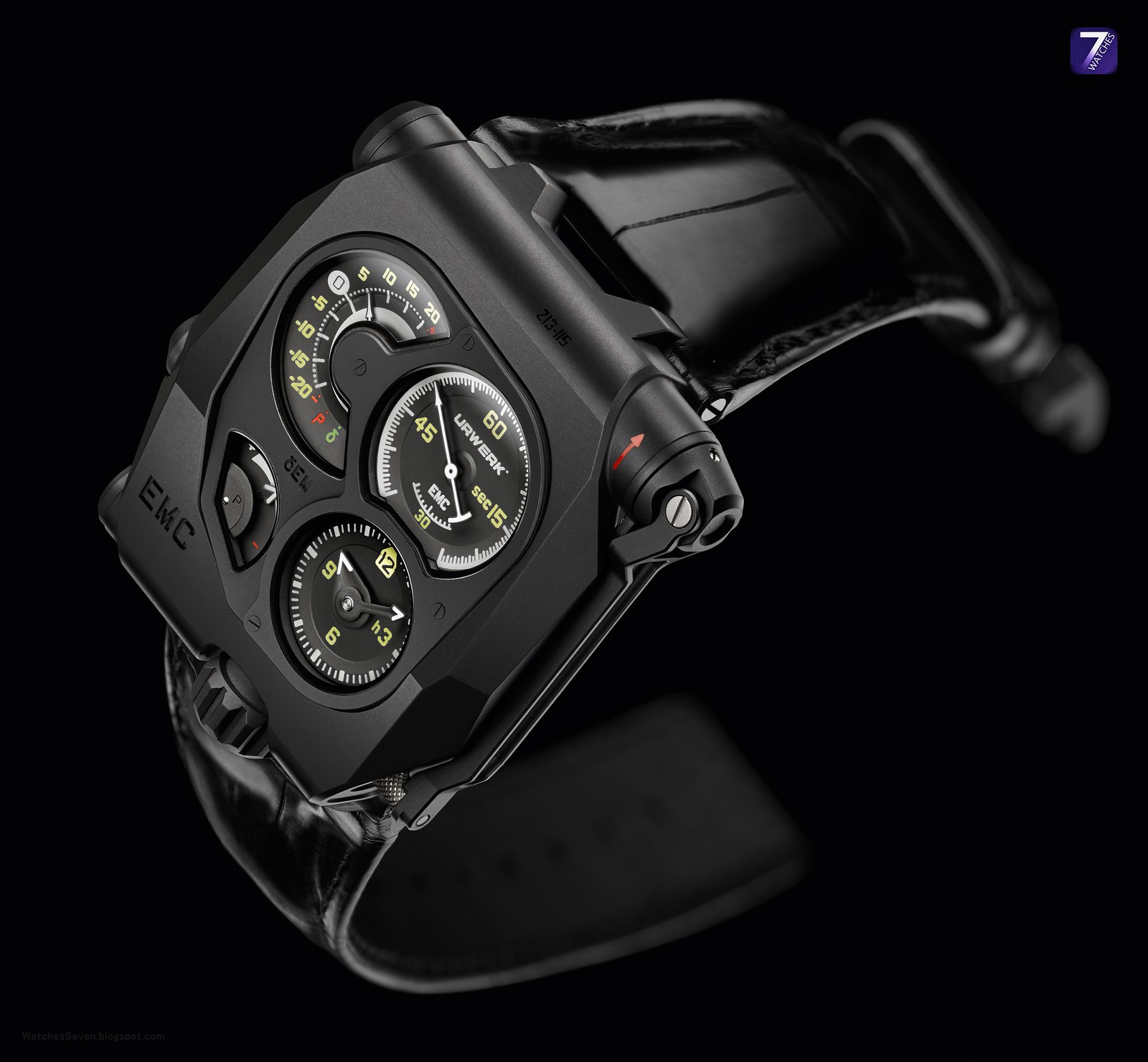
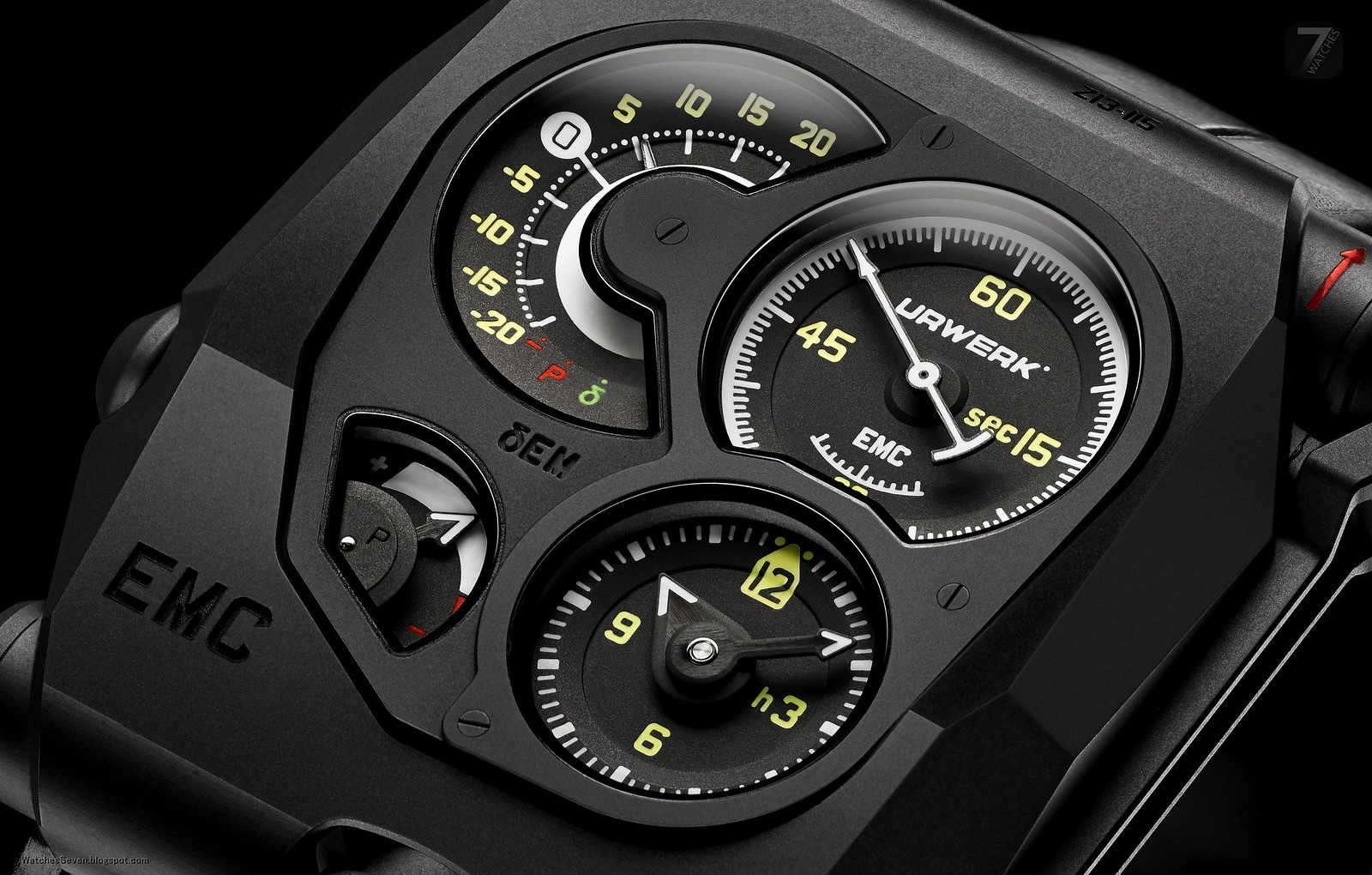
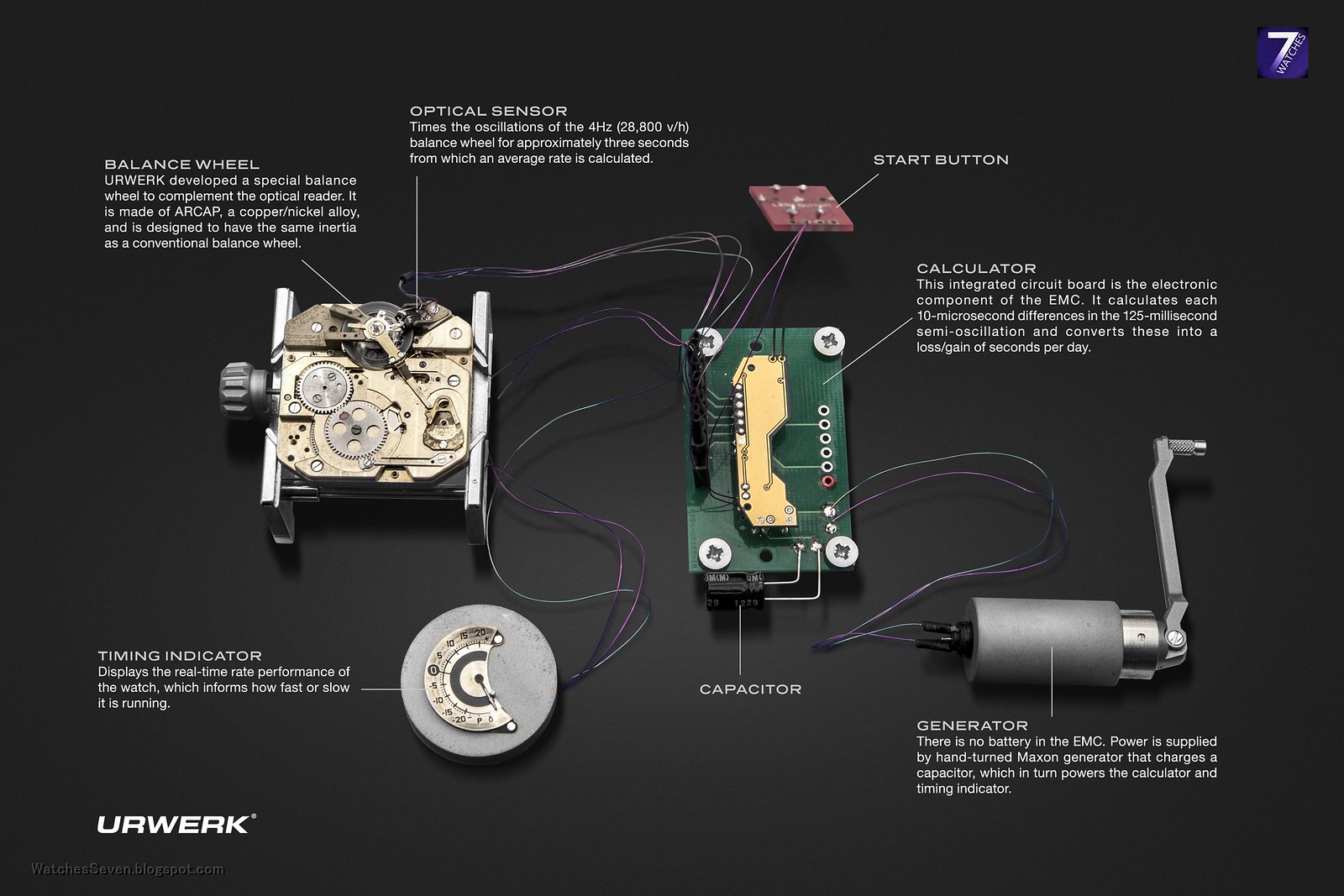
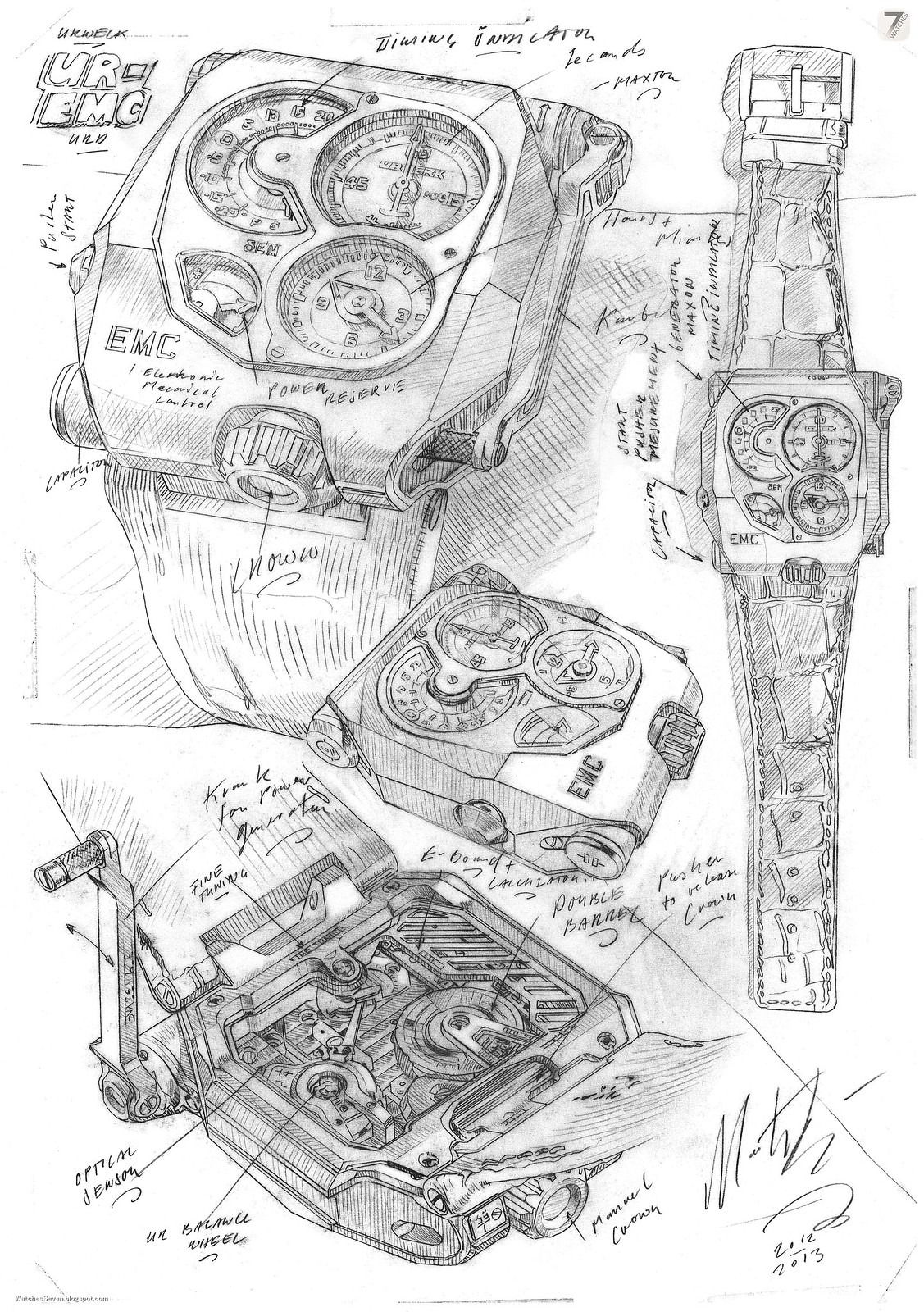
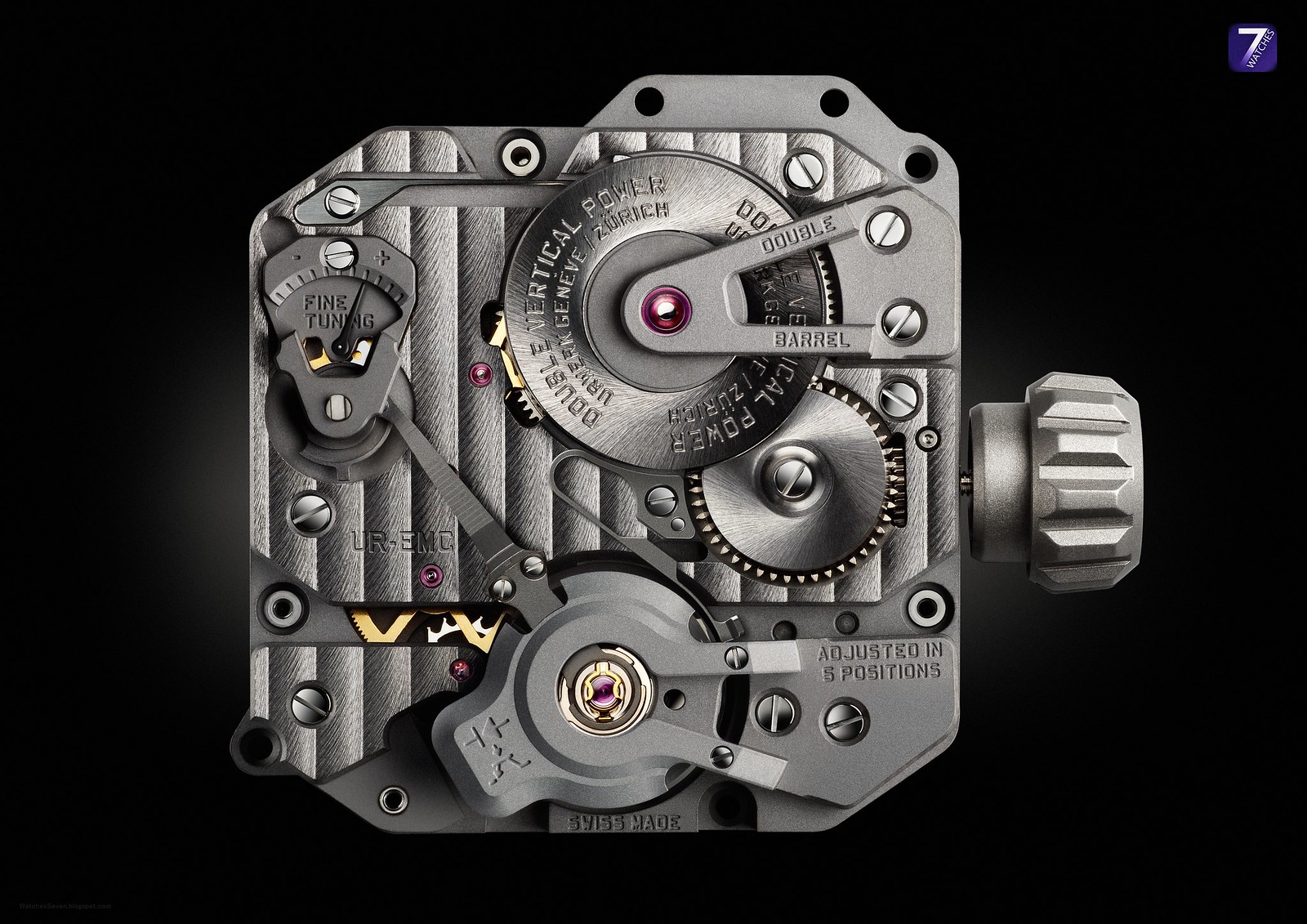
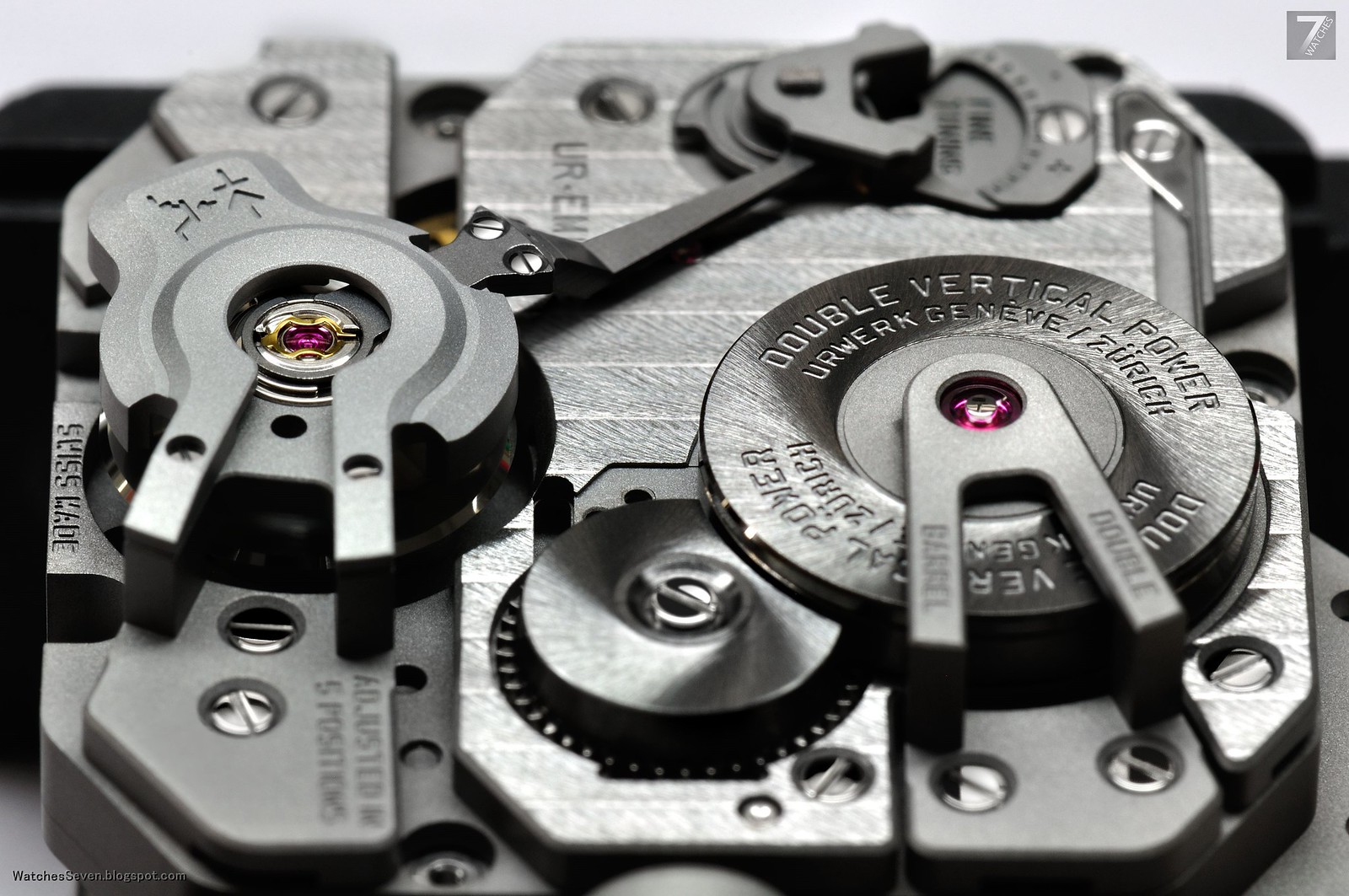
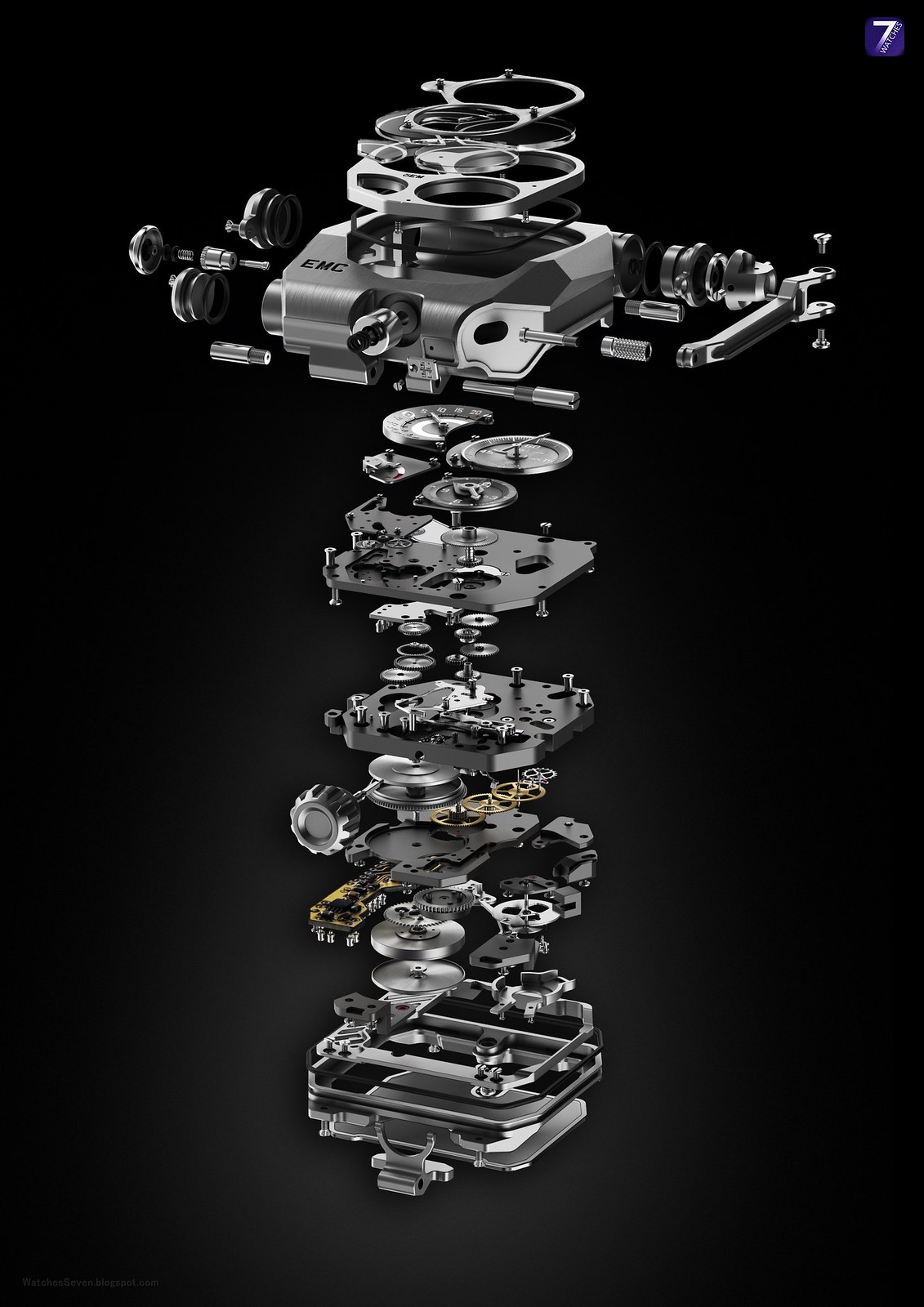
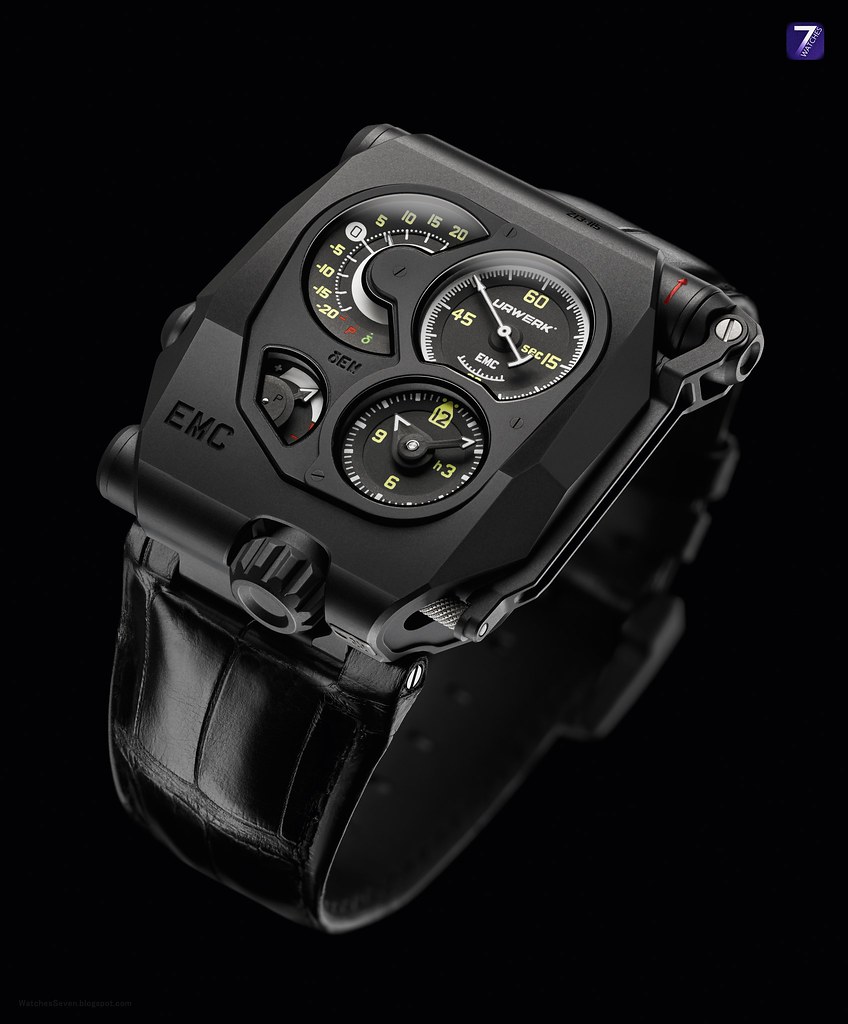
No comments:
Post a Comment